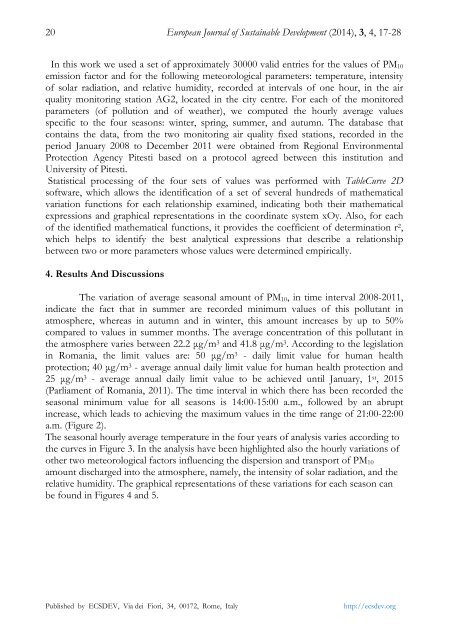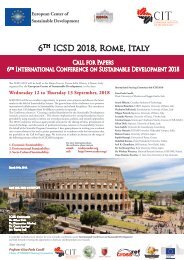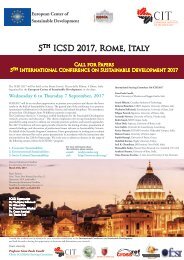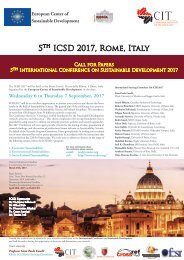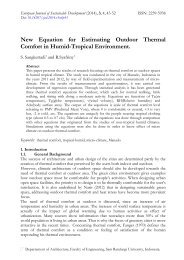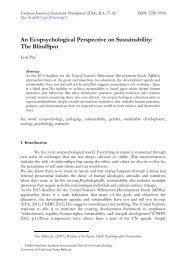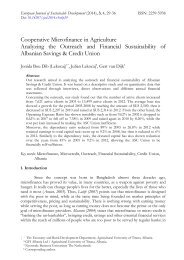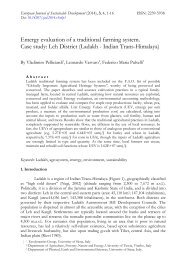Study of particulate matters pollution related with meteorological factors for a city from South-Central of Romania
Reducing the effects of climate change and air pollution is at present a global priority. Development and implementation of effective policies in order to achieve these reductions is a challenge that requires a good understanding of the underlying phenomena of climate change and air pollution. This paper aims to highlight the seasonal variation of PM10 concentration in Pitesti city depending on major meteorological factors (temperature, intensity of solar radiation, and relative humidity). The applied methodology consists in statistical processing, using specialized software, of a database containing historical records of concentration values of this pollutant and of meteorological parameters recorded concurrently. The results of processing a series of approximately 30000 values recorded from 2008 to 2011 indicate the fact that in every season (winter,spring, summer, and autumn) the concentration of PM10 varies according to a sixth degree polynomial function, whose variable is one of the considered meteorological factors. The mathematical relationship that best approximates the variation of average PM10 concentration in relation with the three meteorological factors is by the form of a multiple linear regression equation. Keywords: air pollution and human health, particulate matters related with meteorological factors, statistical analysis
Reducing the effects of climate change and air pollution is at present a global priority. Development and implementation of effective policies in order to achieve these reductions is a challenge that requires a good understanding of the underlying phenomena of climate change and air pollution. This paper aims to highlight the seasonal variation of PM10 concentration in Pitesti city depending on major meteorological factors (temperature, intensity of solar radiation, and relative humidity). The applied methodology consists in statistical processing, using specialized software, of a database containing historical records of concentration values of this pollutant and of meteorological parameters recorded concurrently. The results of processing a series of approximately 30000 values recorded from 2008 to 2011 indicate the fact that in every season (winter,spring, summer, and autumn) the concentration of PM10 varies according to a sixth degree polynomial function, whose variable is one of the considered meteorological factors. The mathematical relationship that best approximates the variation of average PM10 concentration in relation with the three meteorological factors is by the form of a multiple linear regression equation.
Keywords: air pollution and human health, particulate matters related with meteorological factors, statistical analysis
You also want an ePaper? Increase the reach of your titles
YUMPU automatically turns print PDFs into web optimized ePapers that Google loves.
20 European Journal <strong>of</strong> Sustainable Development (2014), 3, 4, 17-28<br />
In this work we used a set <strong>of</strong> approximately 30000 valid entries <strong>for</strong> the values <strong>of</strong> PM 10<br />
emission factor and <strong>for</strong> the following <strong>meteorological</strong> parameters: temperature, intensity<br />
<strong>of</strong> solar radiation, and relative humidity, recorded at intervals <strong>of</strong> one hour, in the air<br />
quality monitoring station AG2, located in the <strong>city</strong> centre. For each <strong>of</strong> the monitored<br />
parameters (<strong>of</strong> <strong>pollution</strong> and <strong>of</strong> weather), we computed the hourly average values<br />
specific to the four seasons: winter, spring, summer, and autumn. The database that<br />
contains the data, <strong>from</strong> the two monitoring air quality fixed stations, recorded in the<br />
period January 2008 to December 2011 were obtained <strong>from</strong> Regional Environmental<br />
Protection Agency Pitesti based on a protocol agreed between this institution and<br />
University <strong>of</strong> Pitesti.<br />
Statistical processing <strong>of</strong> the four sets <strong>of</strong> values was per<strong>for</strong>med <strong>with</strong> TableCurve 2D<br />
s<strong>of</strong>tware, which allows the identification <strong>of</strong> a set <strong>of</strong> several hundreds <strong>of</strong> mathematical<br />
variation functions <strong>for</strong> each relationship examined, indicating both their mathematical<br />
expressions and graphical representations in the coordinate system xOy. Also, <strong>for</strong> each<br />
<strong>of</strong> the identified mathematical functions, it provides the coefficient <strong>of</strong> determination r 2 ,<br />
which helps to identify the best analytical expressions that describe a relationship<br />
between two or more parameters whose values were determined empirically.<br />
4. Results And Discussions<br />
The variation <strong>of</strong> average seasonal amount <strong>of</strong> PM 10 , in time interval 2008-2011,<br />
indicate the fact that in summer are recorded minimum values <strong>of</strong> this pollutant in<br />
atmosphere, whereas in autumn and in winter, this amount increases by up to 50%<br />
compared to values in summer months. The average concentration <strong>of</strong> this pollutant in<br />
the atmosphere varies between 22.2 μg/m 3 and 41.8 μg/m 3 . According to the legislation<br />
in <strong>Romania</strong>, the limit values are: 50 μg/m 3 - daily limit value <strong>for</strong> human health<br />
protection; 40 μg/m 3 - average annual daily limit value <strong>for</strong> human health protection and<br />
25 μg/m 3 - average annual daily limit value to be achieved until January, 1 st , 2015<br />
(Parliament <strong>of</strong> <strong>Romania</strong>, 2011). The time interval in which there has been recorded the<br />
seasonal minimum value <strong>for</strong> all seasons is 14:00-15:00 a.m., followed by an abrupt<br />
increase, which leads to achieving the maximum values in the time range <strong>of</strong> 21:00-22:00<br />
a.m. (Figure 2).<br />
The seasonal hourly average temperature in the four years <strong>of</strong> analysis varies according to<br />
the curves in Figure 3. In the analysis have been highlighted also the hourly variations <strong>of</strong><br />
other two <strong>meteorological</strong> <strong>factors</strong> influencing the dispersion and transport <strong>of</strong> PM 10<br />
amount discharged into the atmosphere, namely, the intensity <strong>of</strong> solar radiation, and the<br />
relative humidity. The graphical representations <strong>of</strong> these variations <strong>for</strong> each season can<br />
be found in Figures 4 and 5.<br />
Published by ECSDEV, Via dei Fiori, 34, 00172, Rome, Italy<br />
http://ecsdev.org


